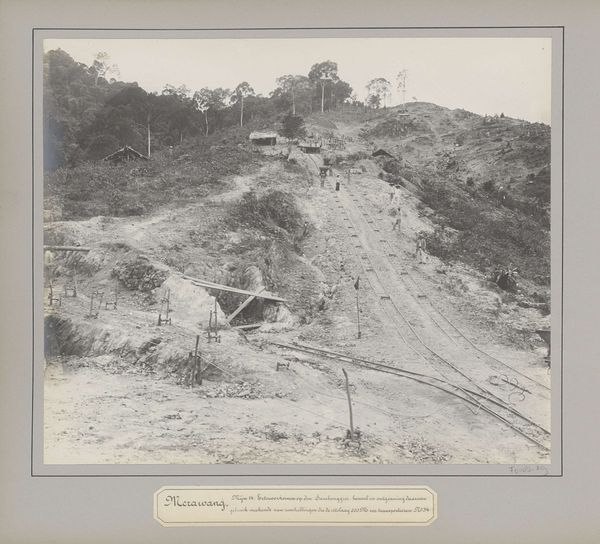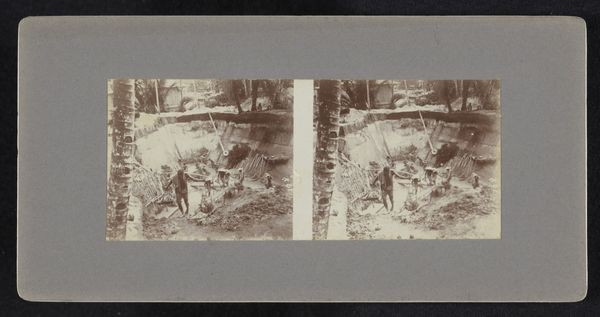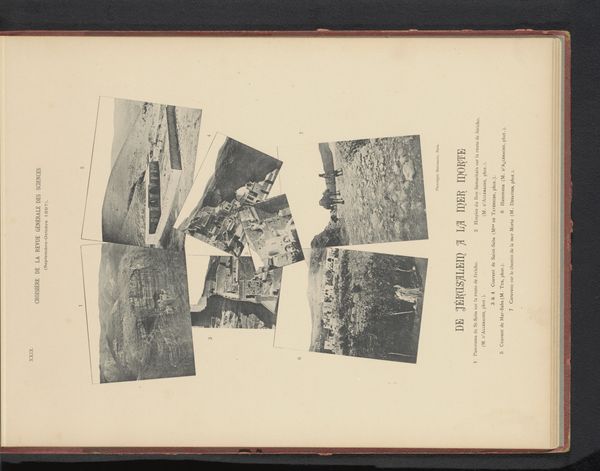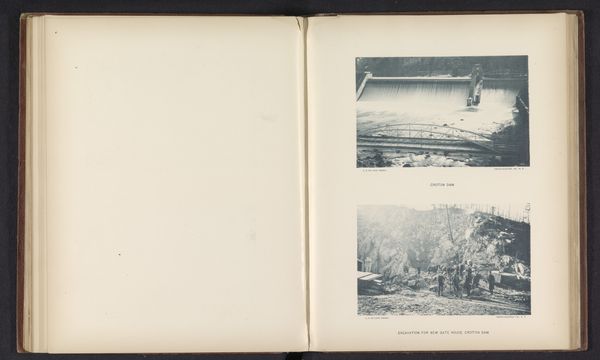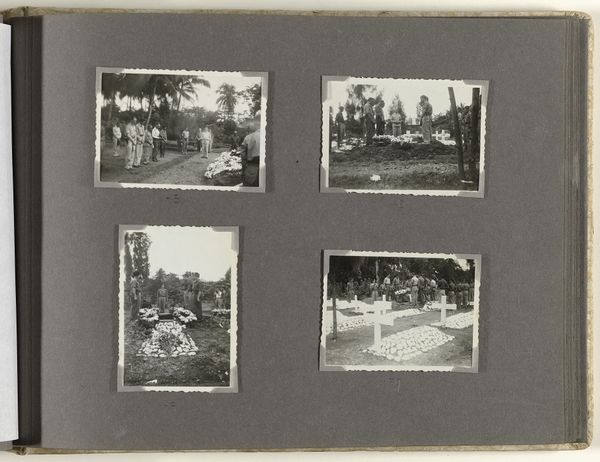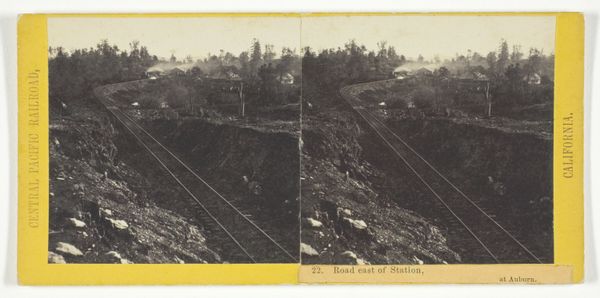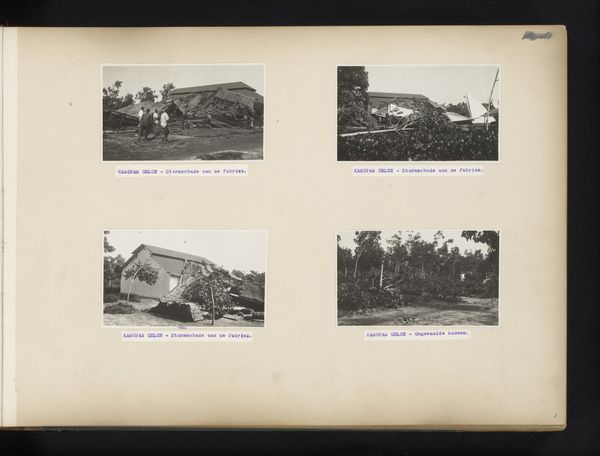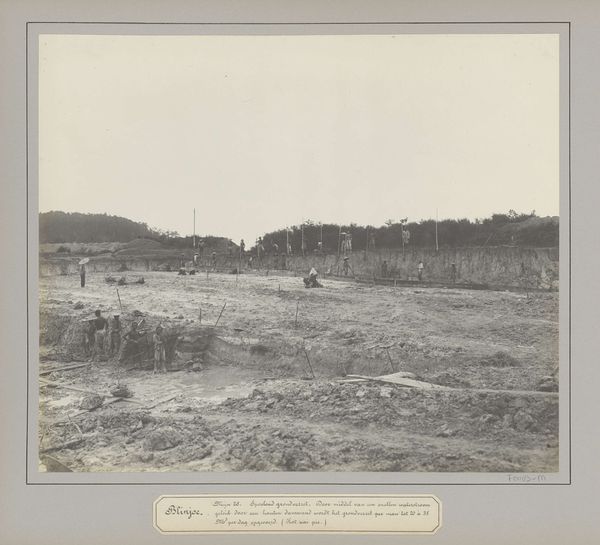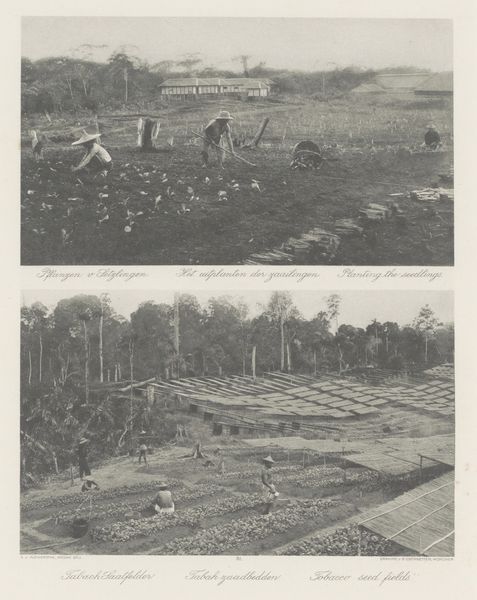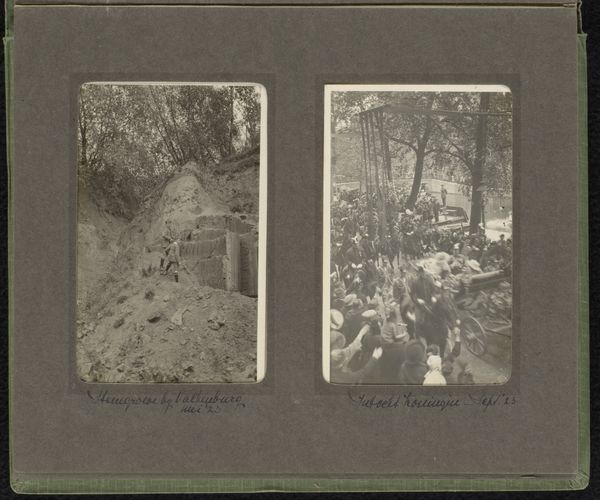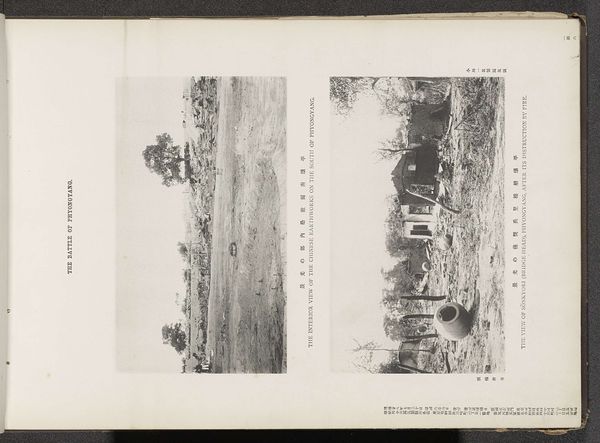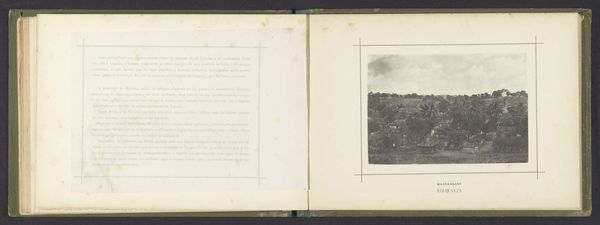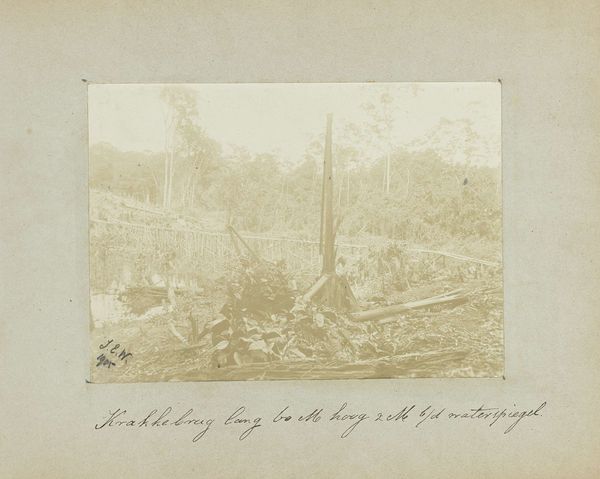
albumen-print, photography, albumen-print
#
albumen-print
#
landscape
#
photography
#
albumen-print
#
realism
Dimensions: height 83 mm, width 105 mm, height 205 mm, width 255 mm
Copyright: Rijks Museum: Open Domain
Editor: We're looking at two albumen print photographs mounted on card, both seemingly taken between 1905 and 1910. The images are untitled, but inscriptions in Dutch beneath them refer to "Gugana goud placer" and "arbeiders aan het graven." They depict scenes of gold mining, presumably in Suriname. What stands out to me is the stark contrast between the dense, untouched rainforest and the deeply scarred earth of the mining operation. What do you make of this piece? Curator: It's fascinating to view these images through a historical lens, considering the complex relationships between colonial powers, indigenous labor, and the extraction of natural resources. What do you think the purpose of these images would have been at the time of their creation? Editor: Maybe they were made as a form of documentation or propaganda by the colonizers? Like showing the success and orderliness of the mining operations. Curator: Precisely. Consider the context: Early 20th century, the height of European colonialism. These photographs visually reinforce the notion of 'progress' and resource exploitation as a civilizing mission. Note the apparent order in the composition of the lower photograph and the overseeing men at the top one. These might well have been presented back in Europe to bolster investment or to show that the colonies were bringing wealth to the homeland. Do you think it successfully portrays that image? Editor: Now that you mention it, the images actually seem rather… bleak? There are no signs of luxury. The workers seem downtrodden, not exactly a glorious depiction of colonial success. Curator: Indeed, that inherent tension reveals the complex visual narrative at play. The attempt to depict controlled progress falters, replaced by a glimpse of the human cost and ecological devastation. What seems controlled to colonizers may appear exploitative for the subjects. Editor: So, it’s a propaganda image that accidentally reveals some truths? Curator: I believe it is more layered. While it serves a propaganda purpose, the inherent visual truths present in these images speak to its larger place in cultural history. Thank you, this helped solidify the visual tensions that are at play in this photograph.
Comments
No comments
Be the first to comment and join the conversation on the ultimate creative platform.
